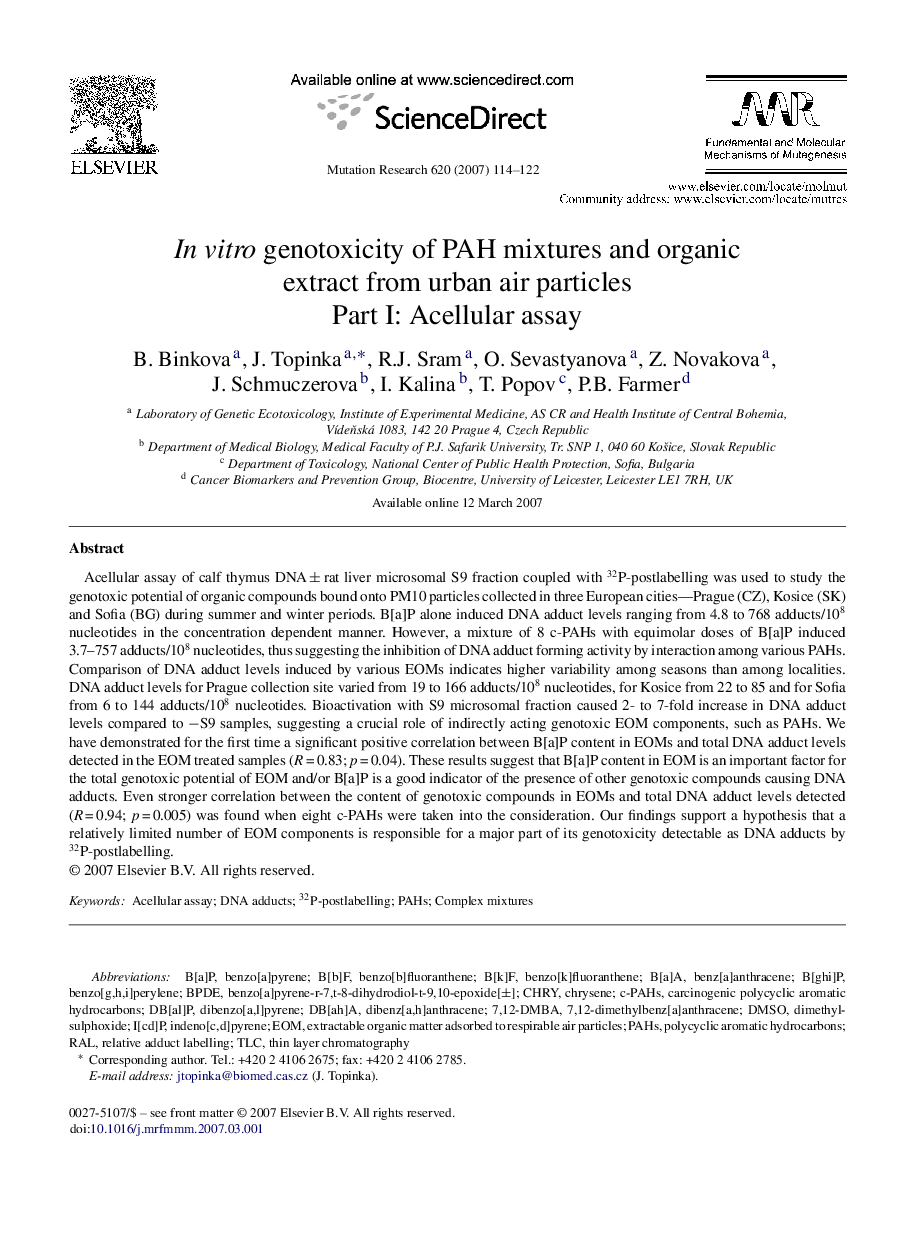| Article ID | Journal | Published Year | Pages | File Type |
|---|---|---|---|---|
| 2147367 | Mutation Research/Fundamental and Molecular Mechanisms of Mutagenesis | 2007 | 9 Pages |
Acellular assay of calf thymus DNA ± rat liver microsomal S9 fraction coupled with 32P-postlabelling was used to study the genotoxic potential of organic compounds bound onto PM10 particles collected in three European cities—Prague (CZ), Kosice (SK) and Sofia (BG) during summer and winter periods. B[a]P alone induced DNA adduct levels ranging from 4.8 to 768 adducts/108 nucleotides in the concentration dependent manner. However, a mixture of 8 c-PAHs with equimolar doses of B[a]P induced 3.7–757 adducts/108 nucleotides, thus suggesting the inhibition of DNA adduct forming activity by interaction among various PAHs. Comparison of DNA adduct levels induced by various EOMs indicates higher variability among seasons than among localities. DNA adduct levels for Prague collection site varied from 19 to 166 adducts/108 nucleotides, for Kosice from 22 to 85 and for Sofia from 6 to 144 adducts/108 nucleotides. Bioactivation with S9 microsomal fraction caused 2- to 7-fold increase in DNA adduct levels compared to −S9 samples, suggesting a crucial role of indirectly acting genotoxic EOM components, such as PAHs. We have demonstrated for the first time a significant positive correlation between B[a]P content in EOMs and total DNA adduct levels detected in the EOM treated samples (R = 0.83; p = 0.04). These results suggest that B[a]P content in EOM is an important factor for the total genotoxic potential of EOM and/or B[a]P is a good indicator of the presence of other genotoxic compounds causing DNA adducts. Even stronger correlation between the content of genotoxic compounds in EOMs and total DNA adduct levels detected (R = 0.94; p = 0.005) was found when eight c-PAHs were taken into the consideration. Our findings support a hypothesis that a relatively limited number of EOM components is responsible for a major part of its genotoxicity detectable as DNA adducts by 32P-postlabelling.
